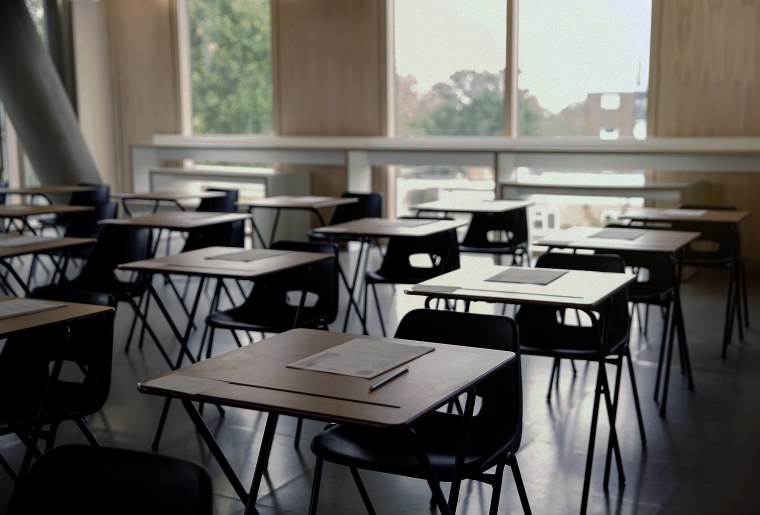On Monday, Donald Trump published a new conspiracy theory: rascally Democrats are reluctant to re-open schools during a pandemic "for political reasons, not for health reasons!" The president added that Democratic leaders, whom he apparently has not spoken to, have launched this secret scheme because "they think it will help them in November."
While there's no reason anyone should take any of this seriously, the underlying question -- how best to safely proceed with the next academic school year -- is an important one, with dramatic implications for families, public health, and the economy.
With this in mind, the president and his team are "barreling into the complex and sensitive policy conversation," though they're doing so in the most post-policy way possible.
On Tuesday, the White House held a series of calls and events on reopening in which Trump said he would “put pressure on governors and everybody else” to fill classrooms. His campaign has accused teachers unions, some of which have expressed concerns about staff safety, of slowing the process.
Echoing his earlier conspiracy theory, which doesn't appear to have any basis in reality, the president said at a televised White House event yesterday, "[W]e hope that most schools are going to be open. We don’t want people to make political statements or do it for political reasons. They think it’s going to be good for them politically, so they keep the schools closed. No way."
He quickly added, "So we’re very much going to put pressure on governors and everybody else to open the schools, to get them open. And it’s very important.... So we’re going to be putting a lot of pressure on: Open your schools in the fall."
There was a degree of irony to the unscripted comments: the president is obviously pushing a political goal with his re-election effort in mind, while denouncing the very idea of anyone involved in the discussion making political statements or decisions.
But more important is the fact that Trump plans to apply "a lot of pressure" on state and local officials without crafting any kind of plan or policies that might help keep kids, families, teachers, and school administrators safe.
It's as if White House officials read my book about post-policy politics and decided to offer a new case study: Team Trump started with a politically satisfying answer, and told everyone to accept it, confident that someone else would figure out the nagging governing details later.
The president couldn't be bothered to do his homework or take due diligence seriously. In a familiar posture, the Republican was content to bark an order -- "Open your schools in the fall" -- without even pretending to have a meaningful blueprint for success.
The point is not to dismiss re-opening schools as a priority. Rather, the point is that this is an incredibly challenging policy matter our president, indifferent toward governance, thinks he can solve with a wave of his hand.
In an interview yesterday, Trump was asked about possible federal recommendations for education officials. "We're going to see," he replied, adding, "[W]e have a long time to think about the school stuff."
Imagine being a parent or an educator, concerned about how best to teach kids during a pandemic, and looking to the White House for effective leadership. Then imagine whether parents and educators will be comforted by an amateur president who believes, a month before many school districts open, "[W]e have a long time to think about the school stuff."
NBC News' report added, "Some school advocates were puzzled by the White House’s abrupt shift towards a full reopening, in part because the Centers for Disease Control and Prevention already had issued recommendations for 'hybrid' reopening plans that include keeping children at least six-feet apart 'if feasible.' There are concerns whether that can be done without reducing the number of kids in the building, which has helped drive plans that would shift some students online part-time."
How did the president reconcile the CDC's recommendations with the White House's new demands? He didn't. In fact, he made no mention of them at yesterday's event.
I don't seriously expect Trump to have all the answers for such a complex issue, but I do expect him to at least acknowledge the complexity in some superficial way. His administration has a responsibility not just to push for re-openings, but to help deal with the root problems that led schools to close in the first place.
For a post-policy president, every question can be answered with a simple, knee-jerk answer. To understand why Trump is failing so spectacularly, I'd recommending starting with this misguided posture.
